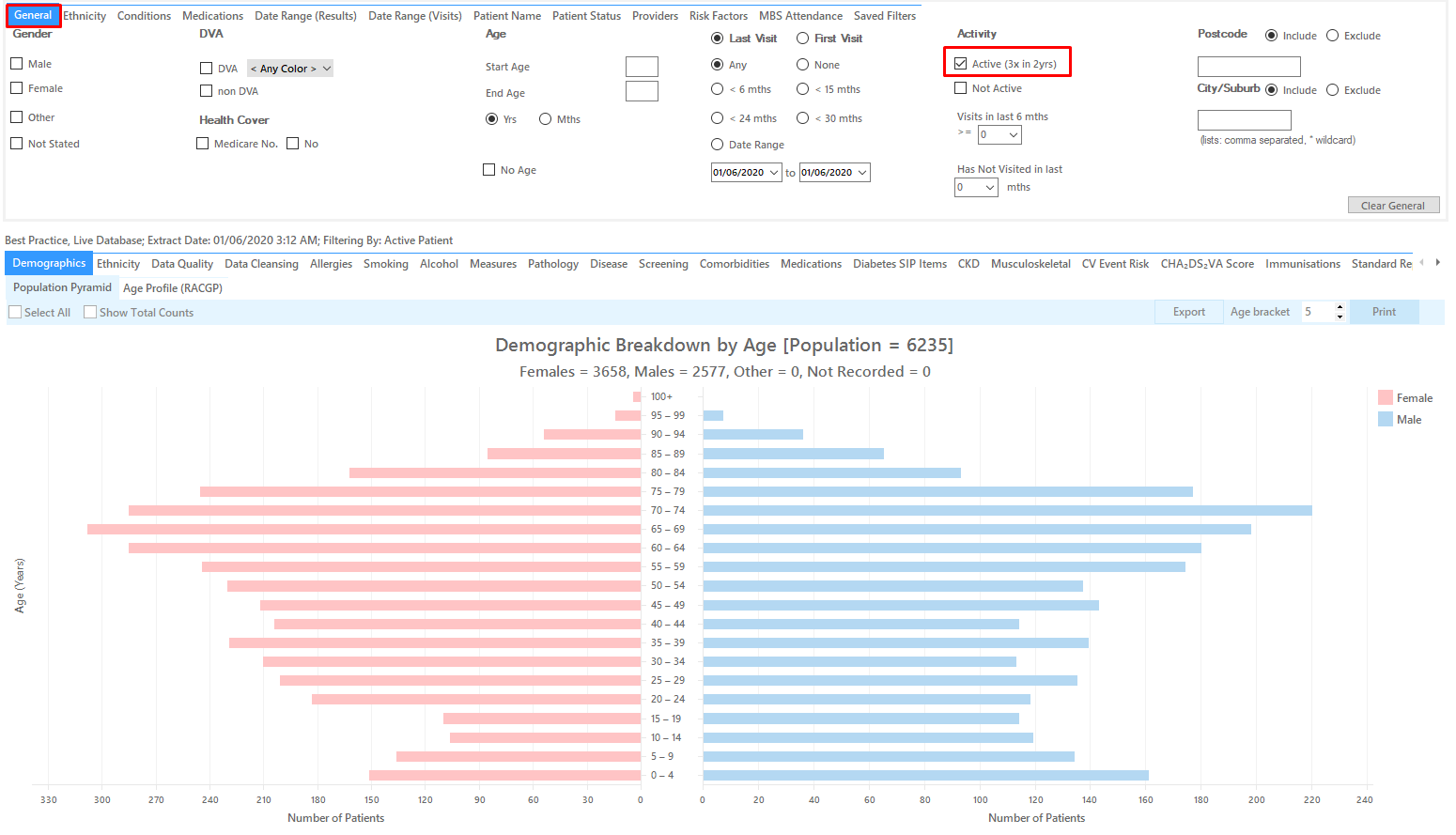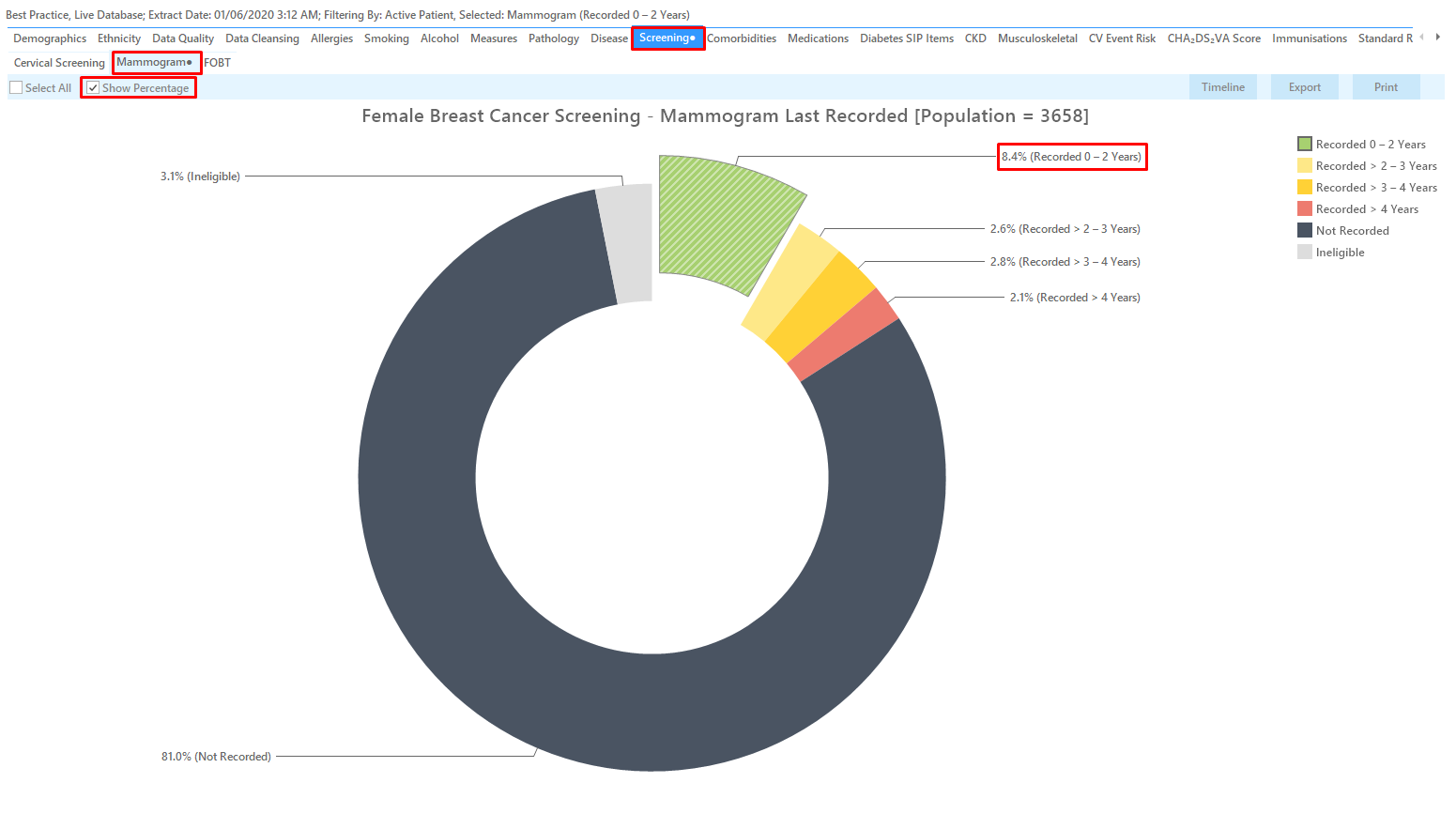Recipe Name: | Breast Cancer Participation Rate |
Rationale: | The ‘breast cancer participation rate’ recipe will support practices who are participating in cancer screening quality improvement to establish and monitor the breast cancer screening participation rate in their practice.
Establishing and monitoring their breast cancer screening participation rates allows primary care providers to:
Note: for practices who have in the past received paper based screening results from BreastScreen and who have not to retrospectively cleaned up their breast screening data, this recipe will not provide an accurate breast cancer participation rate until two years after the practice has begun receiving electronic BreastScreen results. However, it is recommended that practices still use this recipe to establish and monitor their breast cancer participation rate because changes over time will show if there is a positive trend in breast screening participation within their practice. [i] http://www.cancerscreening.gov.au/internet/screening/publishing.nsf/Content/about-breast-cancer |
Target: | The proportion of active female patients, aged 50-74, who have had a bilateral breast screen mammogram within the previous two years. (Note: BreastScreen NSW now recommends that Aboriginal and Torres Strait Islander women screen every two years from age 40 to 74, Use 'Ethnicity' Filter and change 'Age' in the recipe to find the target population) Numerator: The number of active female patients, aged 50-74, who have had a bilateral breast screen mammogram within the previous two years Denominator: The number of active female patients aged 50 to 74 years eligible for a screening mammogram |
Recipe Limitations: | 1: CAT4 cannot recognise paper based results that are scanned to a patient file. For practices who have received paper based screening results from BreastScreen and who have not retrospectively cleaned up their breast screening data, this recipe will not provide an accurate breast cancer participation rate until two years after the practice has begun receiving electronic BreastScreen results. However, it is recommended that practices still use this recipe to establish and monitor their breast cancer participation rate because the recipe will show if there is a positive trend in breast screening participation overtime. 2: This report excludes patients with a number of conditions under the 'ineligible’ category. Practices should be aware of the diagnosis codes that PEN uses to assign patients to ‘ineligible’. Practices should undertake periodic clinical review of patients in the ‘ineligible’ category to assess if any of these patients should return to screening. Your practice may have patients that you consider clinically ineligible for screening that are not captured by these diagnosis codes. These patients should be manually opted out of screening. |
CAT Starting Point: |
|
CAT4 starting point
RECIPE Steps Filters:
- In the “General” Tab, click the 'Active' box and enter Start Age = 50 and End Age = 74
You can select the Gender/Female but the report will automatically show female patients as well as patients with no gender entered. This is the preferred approach, as it will include all patients potentially at risk including those without gender information entered.
Practices should review those patients for whom no gender is entered to ensure they are only sent appropriate cancer screening reminders. Consideration should be given to keeping a register of transgender, gender diverse and intersex patients to support this process.
- Click "Recalculate"
- Click ‘Hide Filters’
Report Steps
- Select the "Screening/Mammogram" tab
- Tick the 'Show Percentage' box on the top left
- Select the 'Recorded 0-2yrs' slice of the graph
This report will show the selected patients and the proportion of patients with a mammogram recorded.
To Export Patient List to Microsoft Excel: 1. Click on the “Export Icon” at the top of the Patient Reidentification window. 2. Click on “XLSX” 3. Choose a file name and a location to save to (eg. Create a folder C:/ClinicalAudit/CAT Patient Follow Up) 4. Click “Save” The steps above will produce a list of patients with contact details in MS Excel which can then be used to:


